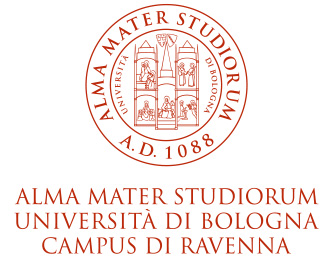Ravenna campus training offer in the field of Conservation Science
The master's degree in Science for the Conservation-Restoration of Cultural Heritage and the PhD in Cultural and Environmental Heritage
Cultural Heritage. Our roots, our future
The contribution of Emilia Romagna Universities in the field on science applied to cultural heritage at EXPO 2021: four research groups of the S.Co.Re programme involved
The four research groups in details:
- Sustainability and cultural heritage
- The earliest migration of Homo sapiens in Southern Europe
The conservation and preservation of cultural heritage is an interdisciplinary field requiring close cooperation between conservator-restorers, archaeologists, (art) historians, collection managers and museum curators on the one hand, and Conservation scientists on the other. While the natural sciences, as well as engineering, play a crucial role in the proper selection of conservation materials, methods and strategies, scientific research in conservation is often conducted by scientists who originally come from outside the cultural heritage field. These scientists thus lack the affinity with the cultural heritage and conservation fields necessary to fully understand and communicate the significance, but also the consequences of their work, to non-technical colleagues.

In order to promote the synergy between the cultural heritage field, and the natural sciences and engineering, the University of Bologna launched a 2nd level Degree Course in Science for the Conservation-Restoration of Cultural Heritage (SCoRe). The goal of SCORE is to develop the first generation of "true" Conservation Scientists at an international level.
Course objective
The course is aimed at the education and training of Conservation scientist, that is to say a scientist with further knowledge in conservation (ethics, history, cultural values, historical technologies, past and present conservation technologies and practice, specific scientific aspects, etc.) which enables him/her to contribute to the study and conservation of cultural heritage within an interdisciplinary team.
At the end of the course graduate conservation scientists will be able to:
The obtainment of the Master’s degree qualifies students to be enrolled into PhD studies of the Mathematical, Physical and Natural Science Faculty of the University of Bologna.
Course syllabus
The syllabus has been developed internationally by taking into consideration the results achieved through the implementation of two European projects (CURRIC§ and UNICONS©) specifically aimed at the development of post-graduate curricula for conservation scientists.
Teaching methods include:
Assessment Methods
Study Hours
The course is full-time and is delivered on an intensive 5-day-a-week basis.
A part from the courses on Processes in conservation, that will be taught by expert conservator-restorers, the others are implemented at the Degree course premises located in Via Guaccimanni 42, Ravenna.
External Links
The teaching programme involves field trips to museums, archaeological sites, conservation labs, on-site visits to on-going projects.
The fourth semester, which is mainly devoted to the students’ implementation of the experimental thesis, will be carried out in one of the university science laboratory, cultural heritage institutions, museums, etc located both in Italy, Europe and China. To this purpose specific agreements with the hosting Institutions have been signed by the University of Bologna.
The Departments involved into the Master programme have close links with networks, practicing conservators, conservation scientists, museums and heritage organisations both in Italy (such as the Opificio delle Pietre Dure in Florence), Europe (such as the National Gallery in London and the Centre de Recherche et de Restauration des Musées de France – Louvre Museum in Paris) and Far East Asia (such as the Art Institute of Nanjing in China).

Why choose this course? A profound knowledge of the composition and structure of cultural heritage represents an essential prerequisite to carry out research in art history or archaeology as well as to plan and undertake conservation-restoration procedures. In particular, decisions on proper preservation actions undeniably require an assessment of the foreseeable evolution of degradations. To gain the deepest insight into nature and properties of artwork materials conservation scientists will benefit from access to research tools of the highest level and to the most skilled research in conservation teams able to take advantage of the outstanding possibilities of the macro- and micro-analytical tools of advanced material science. There are many and varied opportunities for employment across the heritage sector, as well as within forensic and analytical science.
§ R. Mazzeo, “CURRIC: a European project for postgraduate conservation training”,ICCROM Newsletter, 30, pp.11, June 2004
© “Guidelines for Post Graduated Education and training in Conservation Science (for cultural heritage)”, funded by the EU Alfa programme
